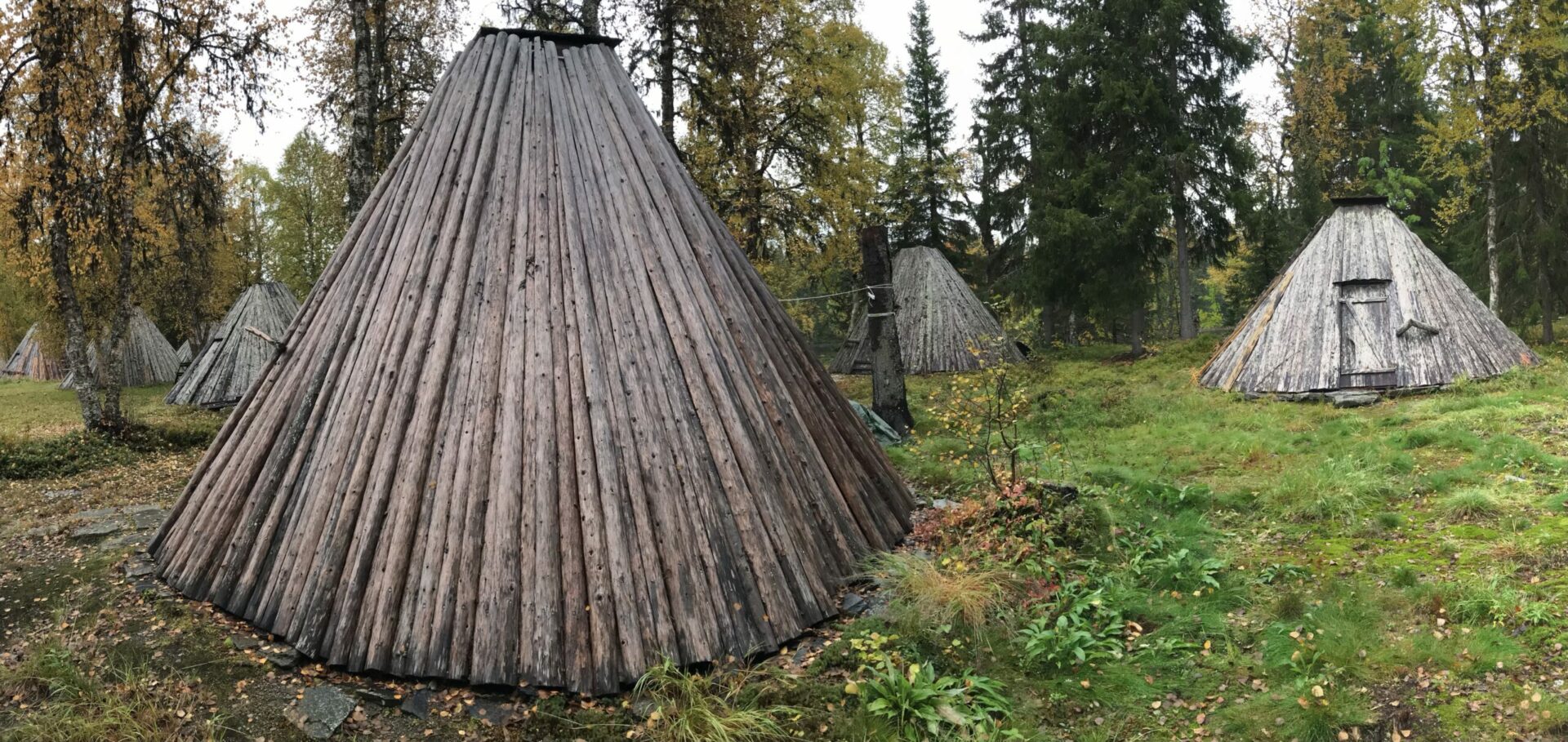All regulars have their own mugs at Jormliens mountain farm
About 10 kilometres north I reached the mountain farm Jormliens fjällgård. The view from the farm is stunning with the lake and the mountain Lill-Jorm. I stay overnight to start early the next day riding.
– Ever since the end of the 19th century tourists have stayed at this farm for food and lodging says the host, who has run the guest house for more than 25 years.
The mountain farm is open in both summer and winter and you can see there are many regulars since they all have their own coffee mugs with their names on, hand painted by the hosts daughter in law.
The host Kenneth prepares a reindeer filet with chanterelles for dinner, served on a wide plate reminding me of the nature outside, with flowers and cloudberries, from the nearby mire, for decoration.
Viking style in the border mountains
I woke up early from the sound of cowbells and the voices of mountain cows. Ola and Elin where waiting for me in Jormvattnet. Together they run a “Natures best” company, Korpens Öga, with a menu of adventures. Last time I was here I went for a guided hike to the nature reserves of Sweden´s longest cave Korallgrottan and the mysterious river Bjurälven leading both underground and above ground along its course. I still marvel at the ongoing project, Expedition Bjurälven, were they are continuously mapping the underground parts of the river. For more than 10 years an international group of speleologists have met here to map the underground system of caves and streams.
This time I was to follow them riding on icelandic horses, viking style, up towards the mountains Jormruet and Klumplidklumpen.
– There are endless possibilities of riding here in the borderland to Norway, Ola says when we took a lunch of fried reindeer meat, “souvas”, wrapped in thin leavened bread, after a few hours riding.
Then we got talking about the movie Dunderklumpen.
– This is exactly where Beppe Wolgers found his inspiration to make the film, Ola said.
Riding back to the farm “Korpens Öga” (the eye of the raven), we stopped to pick ripe cloudberries and chanterelles. They are easy to spot from the comfortable height of the icelandic horses we were riding.
After a visit in the woodfired sauna and a refreshing cold bath in the lake it is time for dinner in the longhouse inspired by the rustic building style of the vikings settling on Iceland. We dug in eagerly as we were served delicious char and cloudberry icecream.














